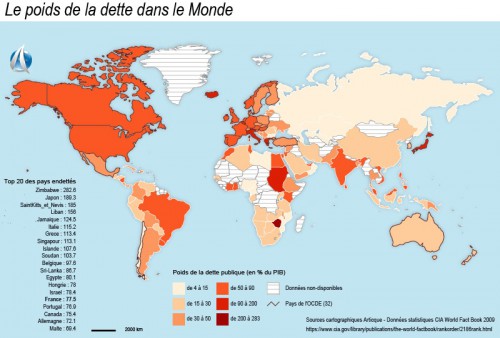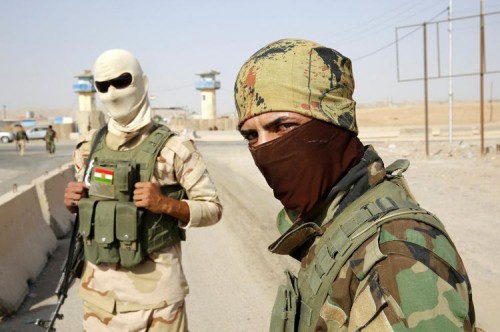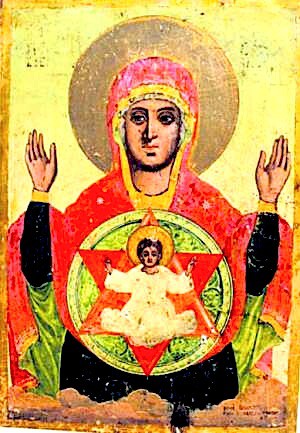
Le livre-hexagramme
de Jean Parvulesco
par Alain Santacreu
Ex: http://www.contrelitterature.com
Deux livres de Jean Parvulesco (1929-2010), La Spirale prophétique et Le Retour des Grands Temps, constituent une figure d’ensemble qui, l’un et l’autre s’entrelaçant à travers le chasse-croisé d’une lecture appropriée, suggère l’image d’un hexagramme, symbole de leur structure tantrique cachée, mandala dissimulé de l’action de la lecture.
Est-ce à dire qu’il faille se livrer à une lecture parallèle de la Spirale et du Retour ? Il semble évident qu’il y a une voie de lecture qui aimanterait tout lecteur prédisposé, une sorte de marche rituélique salomonienne.
D’un livre à l’autre, on retrouve les mêmes thèmes, en des endroits souvent inversés. Par exemple, dans La Spirale prophétique, dès les premiers chapitres, en référence à l’œuvre de Denys Roman, la Franc-maçonnerie se voyait octroyer une mission de sauvegarde des héritages traditionnels à la fin du cycle. Dans Le Retour des Grands Temps, ce rôle conservateur d’Arche vivante des symboles se verra dévolu au « roman occidental de la Fin ». En effet, s’interroge Jean Parvulesco, « depuis l’heure des plus atroces, des plus obscènes déchéances spirituelles de la Franc-Maçonnerie, qui fut, pour nous, longtemps et si heureusement l’Ordre des Refuges, le grand occultisme n’est-il pas réduit, lui aussi, à son tour, à chercher asile, à se dissimuler, provisoirement, et désormais comme faute de mieux, derrière les œuvres finales, crépusculaires, d’une certaine littérature occidentale ? » (p. 107).
Mais, ce rôle exchatologique promis à la Franc-Maçonnerie, conservatrice des héritages, ressurgira dans les derniers chapitres du Retour des Grands Temps, dans la même perspective intégralement traditionnelle, impériale, qui s’était découverte sous l’impulsion de Denys Roman.
C’est ainsi que dans le chapitre intitulé « La mission occulte de Julius Evola », il est fait allusion à une réémergence de la Roma Principia, archétype occidental de l’idée impériale : « À cette enseigne, dira Jean Parvulesco, l’Église, la Franc-Maçonnerie et le Judaïsme s’y trouvaient directement concernés dans leur double éidétique, intact, persistant virginalement dans l’invisible, et c’est la convergence, l’intégration et les épousailles abyssales de ces Trois Instances qui constitueront alors l’immaculée concepion du Nouvel Un, de l’Un final demandant à émerger une nouvelle foi à travers l’identité suprahistorique de la "Roma Ultima". » (p. 383).
C’est par le roman que s’établit la jonction entre La Spirale et Le Retour. Durant la dizaine d’années qui les séparent, l’auteur aura écrit ses quatre premiers romans – qui sont autant de départs clandestins vers l’Inde[1]. Le roman est le liant des deux livres et, par les recensions, en constitue la matière première.
Le Retour des Grands temps, lu en miroir avec La Spirale prophétique, donne lieu à un livre-hexagramme, étrange essai d’alchimie spirituelle.
Dès le deuxième chapitre, l’analyse d’un livre de Graham Masterton, Walkers, nous révèle la métaphore récurrente du Retour. Un long passage est consacré aux voyages souterrains pratiqués sur les lignes dites "ley" par les anciens grands initiés celtes. Cette magie de la terre supposait, dans les temps pré-chrétiens, des lieux magiques reliés entre eux par un réseau de lignes situées à l’intérieur de la terre et que l’on pouvait suivre en marchant.
Métaphoriquement, le lecteur devra lui aussi parcourir ces lignes tracées par Jean Parvulesco sur les pistes du roman occidental de la fin. Romans ardents et passes mystérieuses, romans en tant que récits et récits en tant que romans, glissements ontologiques de l’être dans sa remontée sur la spirale prophétique, les romans sont des chemins initiatiques.
Très vite, il s’établit une sorte d’identité entre le lecteur de Parvulesco et Parvulesco en tant que lecteur d’une autre instance narratrice. La lecture devient ainsi acte transmutatoire donnant lieu au mystère d’une identité agrégative.
Si le roman est l’expérience des limites, les romanciers de la grande littérature, telle que l’entend Parvulesco, appartiennent à cette confrérie des marcheurs du ciel dont le tracé transmigratoire est une via ignis de la romance. Les compagnons de route de Jean Parvulesco, dans Le Retour des Grands Temps, s’appellent Graham Masterton, John Dickson-Carr, Erle Cox, Bram Stoker, Guy Dupré, Patrick Ferré, Maurice Leblanc, Jean Robin, Raoul de Warren, Zacharias Werner, Olivier Germain-Thomas, Talbot Mundy, John Buchan, Donna Tartt. Tous d’une seule confrérie agissant à l’intérieur d’un seul Ordre – ainsi que le montre Herman Hesse dans son Voyage en Orient.
Ces pressentis de l’outre-monde forment une confrérie héroïque, agrégat d’existences engagées vers les chemins brûlants de l’Inde intérieure ; et, les translations romanesques auxquelles ils s’adonnent, annoncent uniment le Retour des Grands Temps.
Jean Parvulesco insiste sur la correspondance du roman de la fin avec l’ Œuvre au jaune des anciens alchimistes – la Xantosis grecque, le Citredo latin –, « manière de rêve éveillé, de réalisation passagère de ce qu’un jour, plus tard, nous en viendra éternellement » (p. 389).
Cet état de supraconscience onirique, de rêve abyssal, dans un chapitre de La Spirale, « G.I. Gurdjieff et la Fraternité des Polaires », Jean Parvulesco l’avait nommé « le quatrième rêve ».
Cette assimilation du roman de la fin à l’« Œuvre au jaune » induit le regard du lecteur vers une vision chromatique. Dans Le Retour, à partir du chapitre « En réentrouvant les portes de l’Inde », il semble que le livre se teinte en bleu, d’un bleu toujours plus intense, jusqu’à atteindre l’indigo le plus marial dans les derniers chapitres.
C'est à partir de la lecture de Talbot Mundy que le livre bleuit. De ce roman, Il était une porte, Parvulesco nous dit qu'il est un mandala, « une porte induite entre ce monde-ci et l'autre monde : c'est l'"écriture même de ce roman d'aventures qui nous conduit jusqu'aux pieds de la Captive aux Cheveux bleus, qui est, elle, en elle-même, le passage vers l'autre monde, et qui, dans un certain sens, n'est faite, elle-même, que de la seule écriture qui n'en finit plus, en ce roman, d'aller vers elle et de la rejoindre en la constituant. Un mandala qu'il s'agit de savoir réactiver par une lecture appropriée »(pp. 306-307).
Nous pouvons alors prévoir, qu'entre le jaune et le bleu, le vert doit surgir. Ce lieu du passage au vert devra être recherché dans la structure d'ensemble de l'hexagramme constitué par Le Retour et La Spirale ; c'est au milieu exact de cette figure cachée que pointe le vert.
Quelle orientation donner à l'hexagramme ? Quelle lecture appropriée adopter afin d'activer ce mandala ? Le triangle pointé vers le haut, est-ce celui du Retour ? et celui pointé vers le bas, est-ce celui de La Spirale ? Heureusement, le centre commun aux deux triangles qui s'interpénètrent, leur cœur orientant, est explicitement désigné par Jean Parvulesco dans le chapitre du Retour intitulé « La mission occulte de Julius Evola » : « Ainsi ai-je eu à susciter, au cœur même – comme on vient de le voir – du présent écrit, l'inquiétant problème d'un livre de "témoignages et de révélations" abordant "tout ce qui sans trahir peut être dit" sur Julius Evola » (p. 395).
Il suffira par conséquent de retrouver le chapitre correspondant « au cœur même » de La Spirale pour découvrir la juste orientation de l'hexagramme.
Le lecteur zélé aura déjà compris que ce lieu ne peut être que le chapitre intitulé « La réapparition du Visage Vert » – car, entre le jaune et le bleu, verte est la teinture des marcheurs du ciel, verte est la faille du centre qui les aimante. Cette faille intérieure, stigmate du cœur incendié, passage secret de la structure d'ensemble, transforme le phénomène de la lecture qui devient acte alchimique. Lire, ainsi conçu, est une prise d'arme pour l'ultime combat.
Alain Santacreu
[1] La Servante portugaise, Les Mystères de la Villa Atlantis, L'Étoile de l'Empire invisible, Le gué des Louves.
(Une première version de ce texte est parue, en 1998, dans le n°3 de la revue "Avec Regard", pp. 100-101).
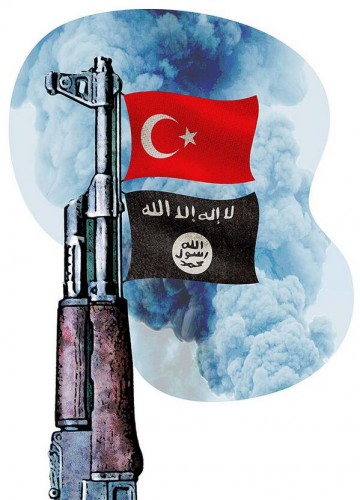 The Turkish Parliament vote on Thursday authorizing the government to send troops across the border into Iraq and Syria is a historical reversal of the legacy of Kemal Ataturk that the country would never again get entangled with the Muslim Middle East.
The Turkish Parliament vote on Thursday authorizing the government to send troops across the border into Iraq and Syria is a historical reversal of the legacy of Kemal Ataturk that the country would never again get entangled with the Muslim Middle East. 

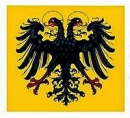


 del.icio.us
del.icio.us
 Digg
Digg